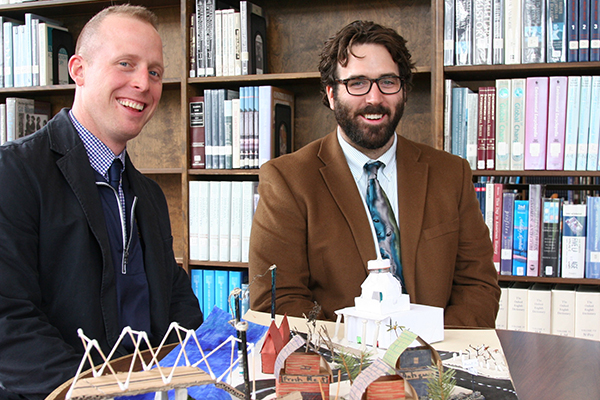
One of the highlights of the winter term and of Bill Taylor’s inaugural year as Headmaster at Trinity-Pawling has been his project-based learning initiative. The faculty was challenged to create interdisciplinary projects with other teachers to spark the interest and the imaginations of our budding young scholars. In “Rebuilding Richmond,” Kevin Richards and myself tasked the boys to rebuild part of the city of Richmond post-Civil War, either during reconstruction or modern times, through the lens of an urban planner.
We required the boys to research and write about the destruction of the capital of the confederacy, Richmond, and specifically the region of city they wished to redesign. The boys not only had to become familiar with the historical, political, and economic sensitivity of rebuilding an area of the city, but had to do so being conscious of basic issues urban planners must address such as pedestrian safety and traffic flow. The boys were required to attend meetings to work on their projects and were given a series of checkpoint assignments throughout the winter term to keep them on task, including reading two brief primary sources about the city and the destruction of the city, creating a Google map of Richmond, referencing their sources with a works cited page, highlighting a geographic area of the city, creating a rough draft of how they proposed to rebuild that area, and finally present their rebuilt geographic area of Richmond including certain geometric features.
One shining example was Min Sang Ki’s “Rebuilding Richmond” project. In fact, other teachers who have since seen Min’s design have been thoroughly impressed as well. Min was active throughout the project working intensely from start to finish. It paid off! Min decided to physically construct, to scale, the “State Capitol Building” and “Mayo Bridge” areas leading into Richmond during the time between Reconstruction and contemporary times. He accompanied his model with a detailed PowerPoint presentation that highlighted aspects of his project, including the required geometric features. Min’s construction of the concrete truss style Mayo Bridge, including a description of the reason why the pieces of the bridge were slightly separated, and the tobacco field created underneath the bridge showed how much thought and care went into the project. As you followed the bridge into town, it led you to a stone Market Street complete with three businesses including Min Tea, Antique Shop, and Meat Store. He designed the rebuilt Capitol Building after the likeness from the District of Columbia including Roman columns. Min also included telegraph lines along with all the required geometric features. Brilliant!
– Nick LaFontaine
